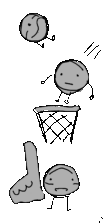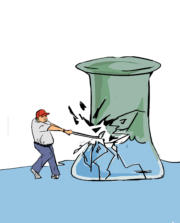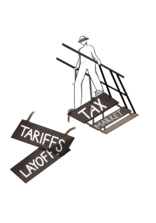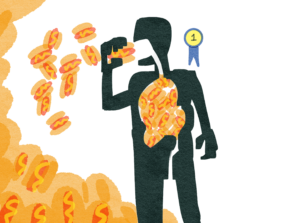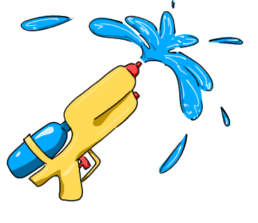reGenerations: Adele Ryono (10)
What is your passion project?
It’s an oral history project at the intersection of preserving history, understanding the origins of our diverse perspectives and connecting generations. I lead workshops and teach middle school students about how to create an oral history profile on [an] older adult who has impacted them. Each profile focuses on the idea of how perspectives are passed through generations and how the people around us have impacted the people we are today … Once I teach a series of workshops at schools, the students complete their profiles and they submit them. [Then] I go over [and] read them, maybe do some light editing and then publish them on our website [our-regenerations.org].
What is the goal of this project?
The first [goal] is simply to build writing skills and [a] love for writing, [which is] something that’s lost in school a lot. The second [goal] is to connect generations. I’m really passionate about how intergenerational connections can build happiness … So with this project, as we challenge a young person and an older person to sit down together and have a conversation. I hope that’ll bring them a little closer together … They [can] already know this person, but maybe sparking a conversation about something that they never knew about helps them see a new side to a person they’ve known for a long time.
What’s your favorite thing about this project?
Seeing all of those profiles come together is super rewarding. I love how you can see not only students’ hard work, but it’s this tangible way of seeing how the relationships between people can change lives [and] how people impact each other so much. You get this archive and you see how the older adultsw in our lives have so much to say from what they’ve lived. We can learn so much, and we don’t always sit down and stop and ask them that. So this project [is] giving students a chance [and] encouraging them to do that, [which] is really important.
The Recap Project: Brandon Lin (10)
What is your passion project?
My passion project involves [turning] clean medical waste into useful products. Currently, I’ve been making clipboards, and I’m collecting mostly needle caps, like the safety caps that they remove before giving shots and turning them into clipboards.
What is the goal of this project?
The goal is to remove as much medical waste from the waste stream as possible [and] keep it out of incinerators and landfills. Also, to spread the word about sustainability. It’s getting a lot more important nowadays because the effects of climate change are so huge now. Every time someone collects plastic and gives it to me, it really helps them think of their daily life and how they’re impacting the environment.
What was the process of getting the project started?
I was just inspired because my dad, who’s a physician, he’s like, ‘there’s so much waste at the office.’ I’m like, ‘why can’t we just use that waste to make other products?’ … I’m working with this nonprofit called Peninsula Precious Plastic, so I reached out to them, and [asked if] I can use their facility … to experiment with [making] plastic items. [When] I went there the first time, I made a few clipboards, and they ended up pretty good.
What are some of the highlights of this project?
We just hit collecting over 1,000 pounds of plastic the other month so that was really exciting. It’s really fun to make the boards. I get to have all these different color plastics that I sort [into] bins, and then I can just pick whatever I want to put into each clipboard, so it’s personalized. Distributing was really fun to see everyone like, ‘I want that clipboard.’ Sometimes they’ll request certain designs on it.
HOPE Uniforms Program: Ethan Hua (10)
What is your passion project?
HOPE stands for “Help Our Planet Earth” and it’s a uniform program. It’s an initiative dedicated to recycling school uniforms and community support. We collect uniforms and we redistribute them back to the community. We partner up with schools, and we have donation [and] recycling bins stationed in the front office, and through that, the community can either pick up or drop off orders. For families who need new uniforms, they’ll request through our website, through a simple form, and on our end, we’ll fill out the uniform donation order through our inventory. We drop it off at the school, they pick it up and once they outgrow the uniforms, they could donate it back by dropping off the uniforms they don’t need back at the school site.
Why did you start this project?
I’ve been in the San Mateo-Foster City School District and public school district my entire life, and I went to College Park first, and then to Bayside. What [these schools] have in common is that they have a uniform. These schools [also] have a student body population of diverse economic backgrounds, and I have many friends who were struggling with procuring uniforms for themselves. I thought [the fact] that some students were struggling to fill [that dress code] needed to be addressed.
What makes this project special?
We’re very sustainable. This all stems from my beliefs [about] sustainability. The main purpose of this program is to prevent environmental waste, from textile waste, specifically, being contributed to landfills. Annually, 11 million tons of textile waste [is] contributed to landfills. I thought that as a kid, that was a scary number. I thought that this program could combat that.
